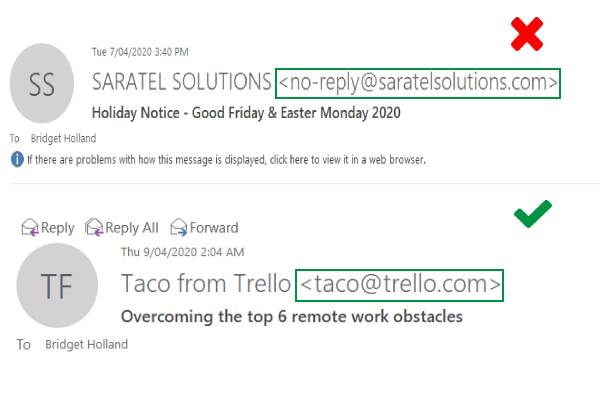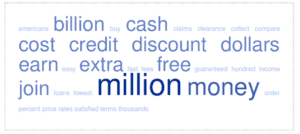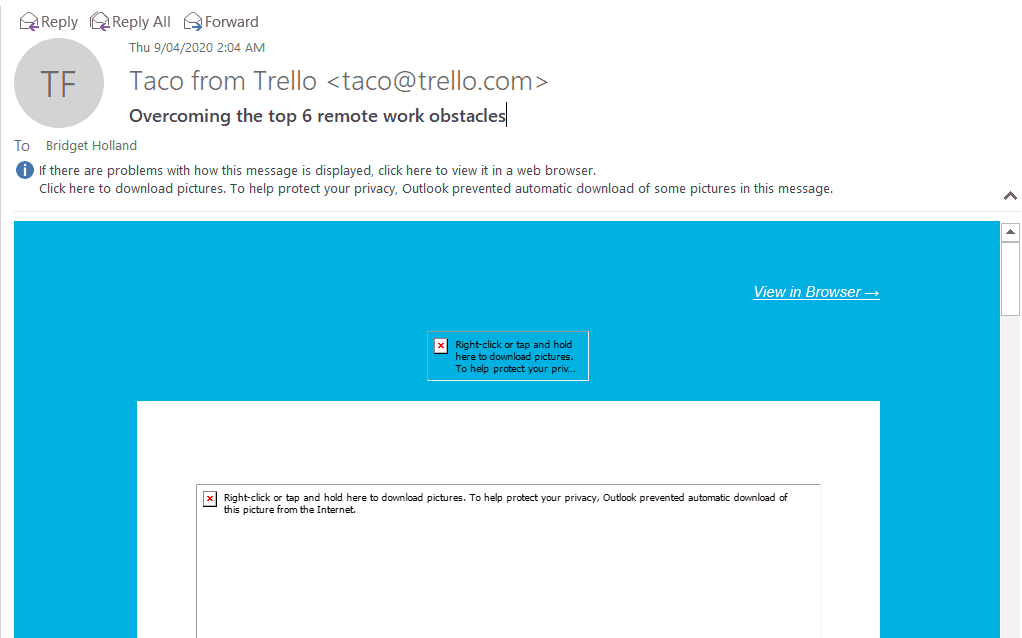So your emails are all Spam Act compliant – but are they getting to the inbox? Most people now have at least one spam filter on their email account. It might be part of the email platform – think about the junk folder in Outlook or the Promotions and Social tabs in Gmail? No one opens those regularly! Many businesses and individuals also use additional software to weed out unwanted emails. So if you want your marketing messages to get through, it’s time to think about how to avoid spam filters.
Here are our top tips to get past spam filters.
1. Make sure you have a clean email list
First, use your own in-house email list.
Don’t buy email lists unless you are sure they are high quality. (In many cases, the quality lists are only available for rent anyway, and you have to submit your marketing for approval. That’s the way people who care about their subscribers operate!)
Don’t scrape emails from the web. You will pick up low quality general enquiry email addresses, and probably also some spam trap email addresses. The latter can cause major issues, including the blocking of all emails from your domain. It’s not worth the risk.
Second, keep your email list clean.
- Make sure people have opted in and can opt out when they want to. (Spam Act basics all over again!)
- Remove emails which ‘hard bounce‘. Email marketing software generally does this for you. Some CRM systems do as well. If in doubt, check!
- Proactively manage subscribers who never open your emails or click any links. Reach out and ask them whether they still want to get your emails. Tell them that if they don’t, you’ll take them off the list. They weren’t responding anyway, so you have nothing to lose, but if they do choose to stay with you, they’re now more engaged!
2. Send email from a real human being
What email address should you send from? There are two options which work:
- Ideally, send your email from a real email address staffed by a real human being.
- If you have a big list, you might want to use an email address such as ‘marketing@yourdomain.com.au’ or ‘communications@yourdomain.com.au’ so that autoreplies don’t clog up your main inbox. (If you go for this option, make sure you take time to manage the autoreplies properly!)
Whatever you do, don’t send from something like ‘noreply@yourdomain.com.au’. This is like starting a conversation and giving the other person no opportunity to respond if they want to. It’s like shouting at them. Pretty damn rude!.

3. Check your email service provider’s guidelines
If you’re using an email service provider (and you almost certainly are), take a look at their advice and guidelines. They have a lot of experience across all kinds of deliverability issues and they want to help their clients.
4. Be careful with your subject line
Subject lines are important. The more people click, the less likely your future emails are to get directed to the junk folder.
Avoid spammy subject lines. All capitals. Lots of emojis. Exclamation marks. ‘Too good to be true’ words like ‘free’ – even worse if it’s ‘FREE’!
Aim for something nice and snappy that raises curiosity or interest so people are more likely to click.
5. Avoid lots of different fonts, font sizes and colors in your email
Don’t have lots of different fonts, font sizes and colours in your email. It looks tacky and loud and it triggers all sorts of alarms in spam filters.
6. Make sure images are optimised
If you’re sending images then make sure that they’re properly optimised.
Recipients may view them on a laptop or a mobile. Make sure they work visually on the smallest screen which might be used. This is especially important if you have words overlaid on the image.

Also check that you have compressed the images so the total kilobytes are as small as possible. The image may look the same size in pixels, but it’s not as ‘heavy’, so it’s easier to move around. (Think about a feather versus a small gold nugget – same size, different weight.)
Compressed images mean less delay when someone’s on a slow internet connection.
And while we’re on the subject of images…
Always include an alt text. The research is a bit out of date, but it’s quite possible that a lot of users don’t see images in your email by default. Trello might have used a great ‘from’ address, but they didn’t do well with images.
7. Segment your database and send targeted messages
Send targeted messages to segments of your database. That way more people will open and click. Which means the spam filters of the commone email providers are more likely to assess your email as valid rather than spam.
8. Be careful with attachments in your email
Attachments are lethal these days because so many attachments formats are used for viruses. A far better option to get past spam filters is to upload your content to the web and include a link to it in your email.
9. Always include a plain text version
Most people don’t read plain text. A few people do. Spam filters also like to see a plain text version.
Many email marketing systems create a plain text version of emails automatically, but for heavily formatted emails the result is not always user-friendly. Check whether you have the opportunity to edit this – just in case a real person tries to read it.

10. Avoid or minimise spam trigger words
Some words are associated with spam. Free. Cash. Win. Viagra. They can set off spam filters.
There are many lists of these words on the web, and we’ve compiled a few of them to give you a downloadable master list of spam trigger words. (No email required to access this.)
So can you never use these words?
It’s not that simple. Sometimes you need a few to get your message across. Just don’t go overboard and use all of them. And keep them away from capitals and exclamation marks!
11. Test your email before you send it.
Of course you always test by sending to yourself or your colleagues.
Of course you always test how your email looks on mobile. On Apple. In Gmail and in Outlook.
You can also test how likely it is to get through spam filters.
Use one or more of these free online spam testers
Not only will they give you an idea how your email performs, they’ll give you some hints what to do about it.
Like everything in marketing, test. Then test again. That’s the best way to avoid spam filters.



